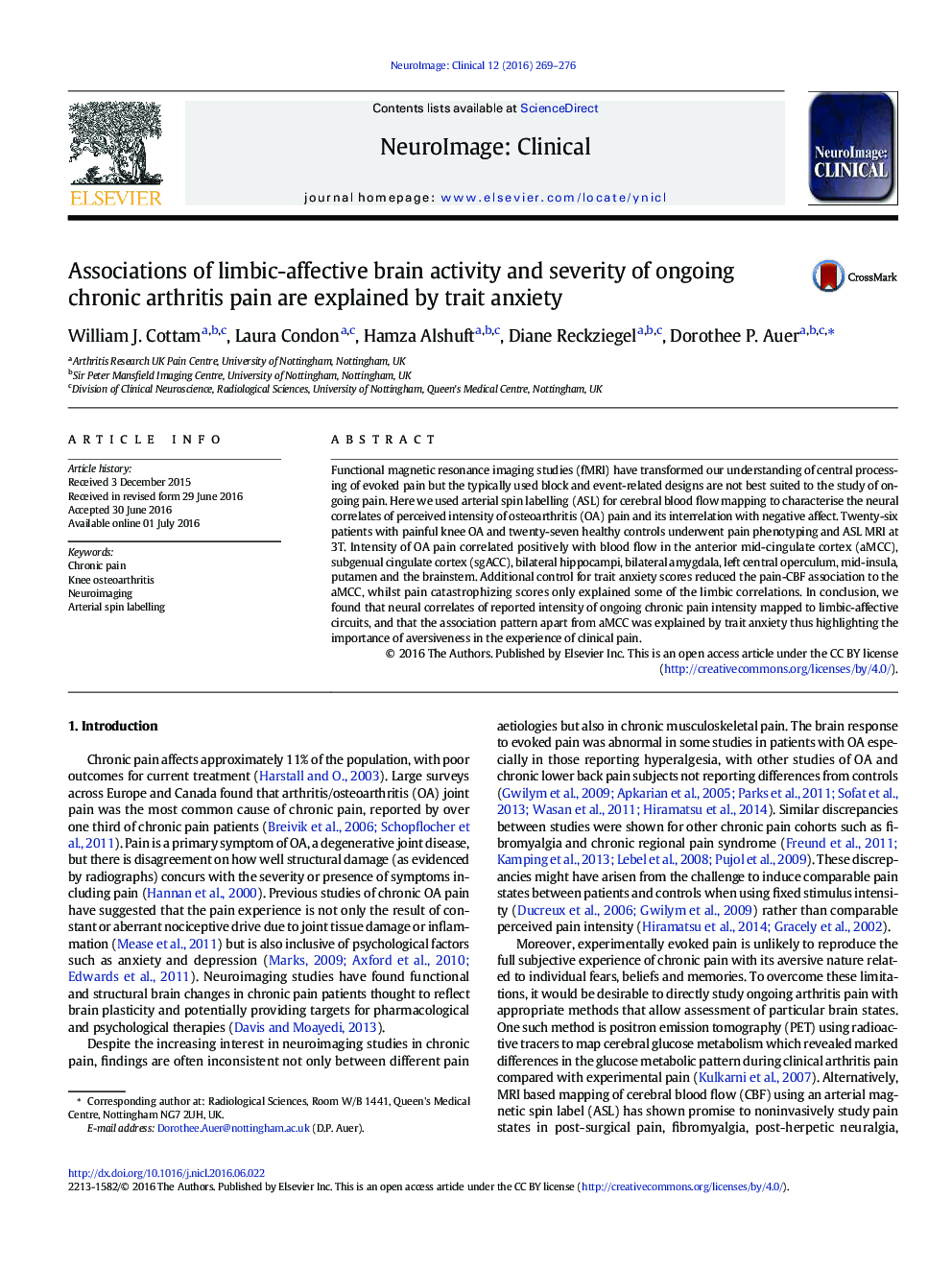| Article ID | Journal | Published Year | Pages | File Type |
|---|---|---|---|---|
| 3074813 | NeuroImage: Clinical | 2016 | 8 Pages |
Abstract
Functional magnetic resonance imaging studies (fMRI) have transformed our understanding of central processing of evoked pain but the typically used block and event-related designs are not best suited to the study of ongoing pain. Here we used arterial spin labelling (ASL) for cerebral blood flow mapping to characterise the neural correlates of perceived intensity of osteoarthritis (OA) pain and its interrelation with negative affect. Twenty-six patients with painful knee OA and twenty-seven healthy controls underwent pain phenotyping and ASL MRI at 3T. Intensity of OA pain correlated positively with blood flow in the anterior mid-cingulate cortex (aMCC), subgenual cingulate cortex (sgACC), bilateral hippocampi, bilateral amygdala, left central operculum, mid-insula, putamen and the brainstem. Additional control for trait anxiety scores reduced the pain-CBF association to the aMCC, whilst pain catastrophizing scores only explained some of the limbic correlations. In conclusion, we found that neural correlates of reported intensity of ongoing chronic pain intensity mapped to limbic-affective circuits, and that the association pattern apart from aMCC was explained by trait anxiety thus highlighting the importance of aversiveness in the experience of clinical pain.
Related Topics
Life Sciences
Neuroscience
Biological Psychiatry
Authors
William J. Cottam, Laura Condon, Hamza Alshuft, Diane Reckziegel, Dorothee P. Auer,
